A baby mouse or other baby mammal that is 10 days old or younger is called a neonate. Also called pups, baby mice are cute and sometimes kept as pets. But in most cases, they can be pests inside homes once they become adults and can be difficult to deal with. Yet, killing baby mice is inhumane and unnecessary.
Finding baby mice inside your house is a huge sign that there is a mice infestation. But since they cannot cause trouble, there is no use in killing them. Instead of getting rid of the pups, locate their mother and force her to leave your house along with her offspring.
Although rare, some baby mice carry zoonotic diseases such as Hantavirus. This is why you should be very careful when handling them, including pet mice. Unlike adult mice, pups are weak and powerless. In this article, you will learn everything about baby mice and what you should do if you find them inside your house.
What Do Baby Mice Look Like?
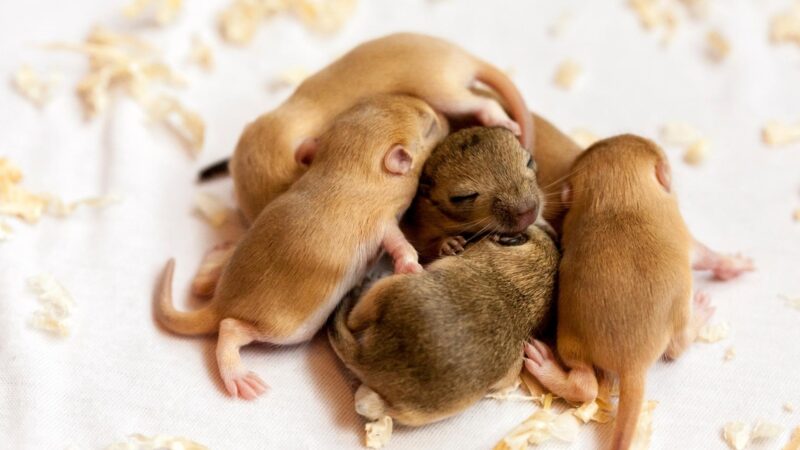
Newborn baby mice look like adults, except that they are tiny, hairless, and blind. They are light red or pink with some white spots. At four days old, their ears are fully developed, and their hair color will start to show. At six days old, the white spots will start to disappear or be gone, and their hair color will improve.
How Big Are Baby Mice?
Newborn baby mice can be 1 inch long or about the size of a quarter and may weigh about 1 gram. Depending on the species, adults may grow up to 7 inches (17.8 cm) long, including their 3-4 inches long tail. The African pygmy mouse is the smallest and measures 1.2 to 3.1 inches (3.05 to 7.87 cm) long.
When Do Baby Mice Open Their Eyes?
Baby mice are born with their eyes closed. They usually start to open their eyes once they are 11 days old. At 12 days old, these pups can already see properly with their eyes open. This is also the age when their mother will try to stop feeding them with milk and will guide them to eating solid foods.
When Do Baby Mice Get Fur?
Baby mice start to show fur on their bellies once they are 8 days old. At 9 days old, their fur will become thicker, and females may also start to show nipples or mammary glands. Females have 5 pairs of nipples, while males have none. Pups can fully grow fur at 10 days old. They are also now becoming more active.
What Do Baby Mice Sound Like?
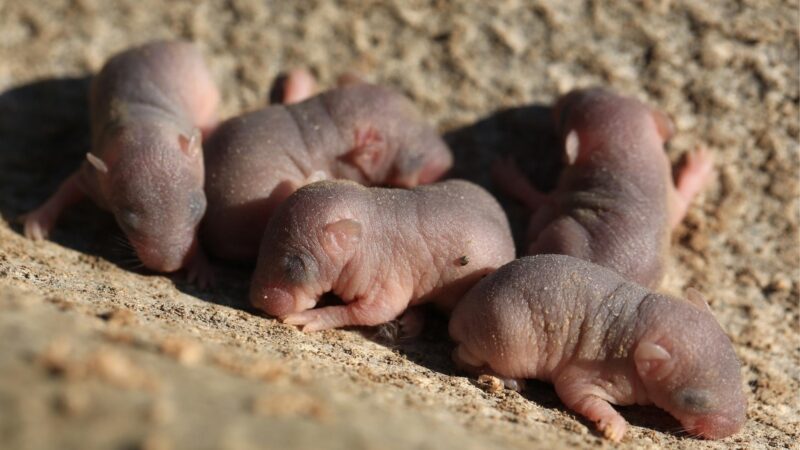
Baby mice are very fragile and dependent on their mothers, especially when it comes to feeding. If they are hungry or feel alone, they will squeak to call their mother. Once their mother responds, pups may also squeak to express their excitement. These squeaking sounds are part of communication among mice.
What Time of Year Do Mice Have Babies?

Like rats, mice have no specific time of year in having babies. These rodents mate all year round, so they have no particular breeding season. Interestingly, mating happens very soon after females have given birth. Mice have an average gestation period of 19-21 days. Therefore, they may give birth every 3 weeks.
Where Can You Find Baby Mice?
Baby mice can be found in their nest. Outdoors, mice build their nest just about anywhere they think is safe from predators. Inside a house, they build nests in hidden areas such as attics, basements, under cabinets, and within the walls. But most likely, mice live near their food sources so they can take care of their pups.
How Many Babies Do House Mice Have?
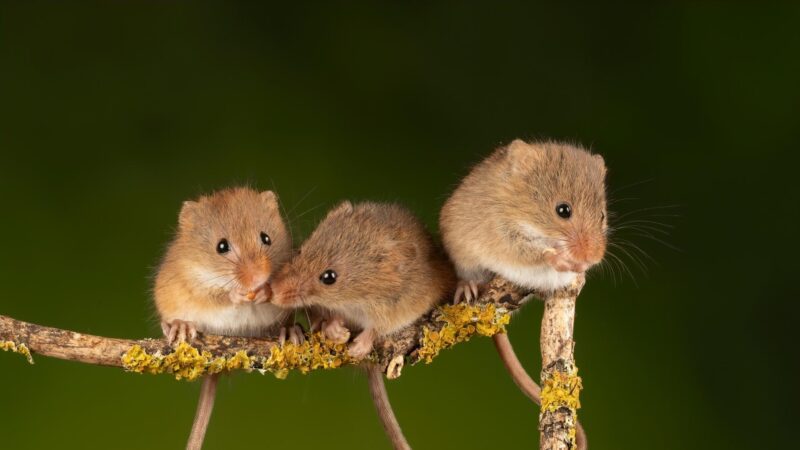
Female mice give birth to around 4-12 babies per litter. The average number of offspring they can have per litter is 5. Since they can be pregnant again after 3 weeks, females may have 5-10 litters a year and an average of 35 babies per year. Mice have a lifespan of 9-12 months in the wild and 5 years in captivity.
When Do Baby Mice Leave the Nest?
The average weaning age of mice is 21 days or around 3 weeks. After this, the young males will start leaving their nest to live independently. However, most young females may stay nearby and will build their own nest. In general, male and female mice reach their sexual maturity or adulthood at 5-7 weeks of age.
How Long Can Baby Mice Live Without Their Mother?
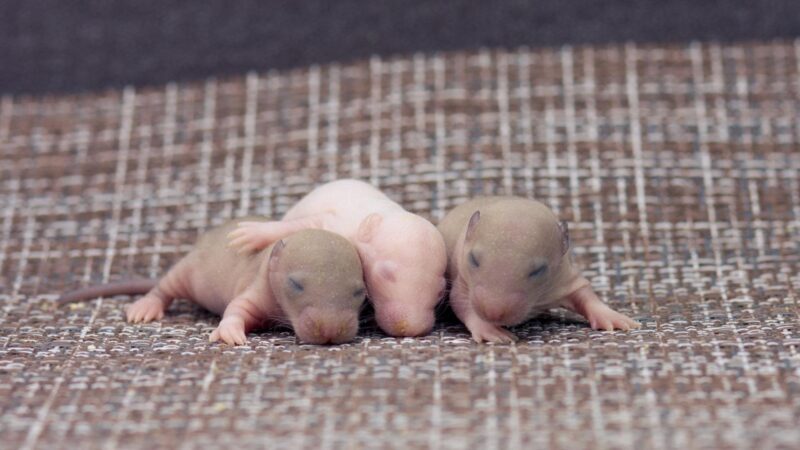
Aside from being fragile, baby mice are also helpless and will only depend on their mother’s care. Without their mother’s milk or care from a foster mother, baby mice can only survive up to 2-4 days. On the other hand, orphan baby mice have a higher chance of survival if they are already at least three weeks old.
What Do Baby Mice Eat?
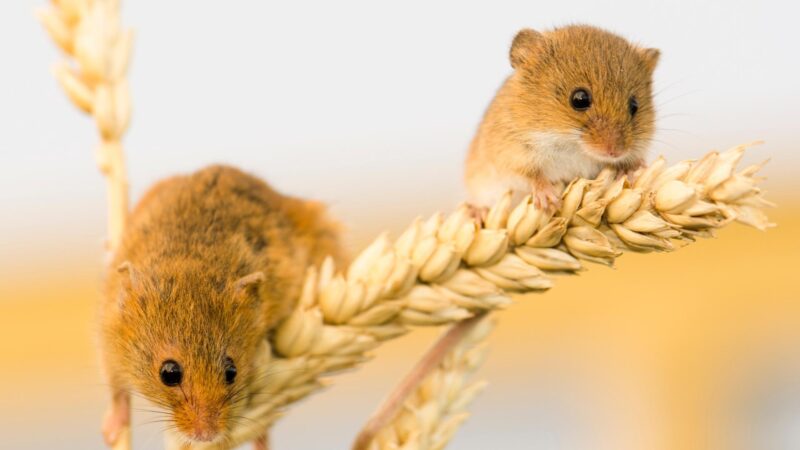
Baby mice may start to eat solid food once they open their eyes. They don’t imitate their mother’s eating behavior but get attracted to food once she starts eating. Baby mice with teeth eat soft fruits, vegetables, and any food they can chew. Pet baby mice are fed with cooked rice, cheese, and human baby food.
What Do Baby Mice Eat When Their Eyes Are Closed?
Baby mice don’t eat anything yet if their eyes are still closed. Instead, they feed on their mother’s milk as other mammals do. Once they are 15-17 days old, their mother will start avoiding or preventing them from sucking milk. However, some baby mice may already start nibbling some solid food at 12 days of age.
Do Mice Eat Baby Mice?
Some mice eat their babies. Although rare, cannibalism in mice is due to several reasons. This includes a shortage of food and disturbances such as frequent changing of the nest and excessive noise. Some first-time mothers eat their baby mice if they are not sure what to do, while some of them eat their sick babies.
How Often Do Baby Mice Eat?
Newborn baby mice suck milk from their mother, usually 6-8 times a day until they are 1 week old. At 1-2 weeks old, they will suck milk about 5-6 times a day. At 2-3 weeks old, the milk-feeding frequency will be reduced to 4 times a day only. At this age, these mouse pups will be weaned by their mother and will now eat food.
What do Baby Mice Feces Look Like?
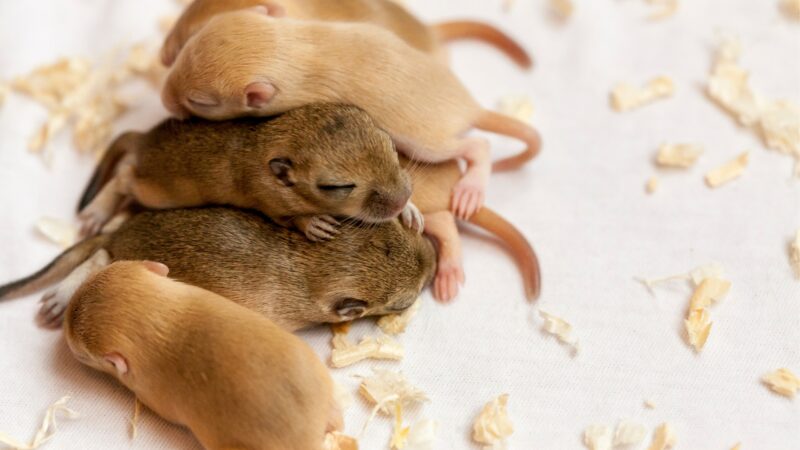
Since younger baby mice only rely on milk, they don’t poop yet. But once these pups start to eat solid food, they will also start to poop. Baby mice feces look like droppings from adult mice, except that they are smaller. Mouse droppings are mostly dark, 1/8 to 1/2 inches (3.2 to 12.7 mm) long, and have pointed ends.
How to Kill Baby Mice?
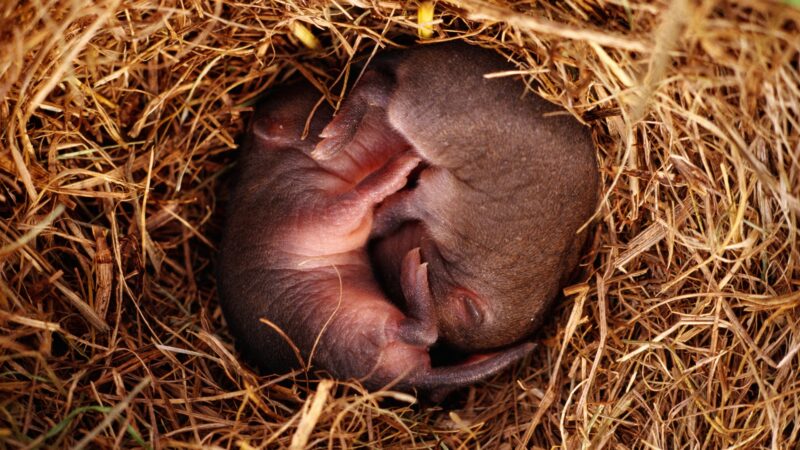
Killing baby mice is not the best solution and is not recommended. Also, baby mice that are abandoned by their mother or have been orphaned will die soon due to starvation. And as mentioned above, some mice eat their young. Instead of killing baby mice, get rid of the adult mice so they could no longer reproduce.
How to Get Rid of Baby Mice Naturally?
Again, getting rid of baby mice involves getting their mother out of the house. These pups are usually hidden in the dark and will die without their mother. Since baby mice cannot move as fast as adults, they will not leave the house by themselves. Therefore, here are some ways to get rid of baby mice naturally:
- Allow the baby mice to grow until such time they can leave their house with their mother.
- Repel the adult mouse using natural products such as essential oil sprays . You can also create loud noises and install bright sparkling lights at night.
- NURTURE YOUR SPIRIT: Add a few drops of our peppermint oil in...
- IDEAL FOR RELIEVING NECK TENSION: To help relieve head and neck...
- VERSATILE USE: Use in aromatherapy, massage, DIY beauty products,...
- 100% PURE & ORGANIC: Our premium GMO-FREE Peppermint oil is steam...
- BLENDS WELL WITH OTHER ESSENTIAL OILS: Such as Eucalyptus,...
- Leave some exit doors open so the mother mouse can leave the house and bring her babies peacefully along with them.
- You can also use reusable humane mouse traps to safely trap the adults alive. For the bait, use peanut butter, cheese, or pet food.
- 100% Humane & Ethical - Remove stubborn mice without hurting them...
- Safe for Kids, Dogs, & Cats - Keep your children, dog, cat, and...
- Easy & Reusable - These self locking plastic no kill mouse traps...
- Versatile Trap - This safe mouse trap humane can also be a tunnel...
- Mice-Proof Home - Stop killing and start catching with our garage...
- Once the adults are trapped, contact your local wildlife rehabilitator so they will be the ones to handle the baby mice and their mother.
- If you find baby mice without their mother, avoid touching them without safety gloves. Some mice species, such as deer mice, carry Hantavirus.
Related: Mice Control: How To Get Rid of Mice?
Baby mice are not as dangerous as adults, but it does not necessarily mean that you should ignore them. Remember, mice can reproduce within a few weeks, and their babies grow very fast. They are also very small and can fit in crawl spaces. Aside from getting rid of adult mice, you should prevent them from coming back.
List of Sources
Timm, R. M. (2011). House Mouse. Agriculture and Natural Resources, University of California.
Potter, M. F. (1994). Control of Mice. University of Kentucky.
Lane-Petter, W. (1968). Cannibalism in rats and mice. Proceedings of the Royal Society of Medicine.
Mouse Pup Appearance by Age. University of California.
- How to Get Rid of Copperheads | Practical Guide - August 27, 2023
- How to Get Rid of Corn Snakes | What Makes Them Aggressive? - August 27, 2023
- How to Get Rid of Alligators | Safety Measures and Removal Methods - July 16, 2023


